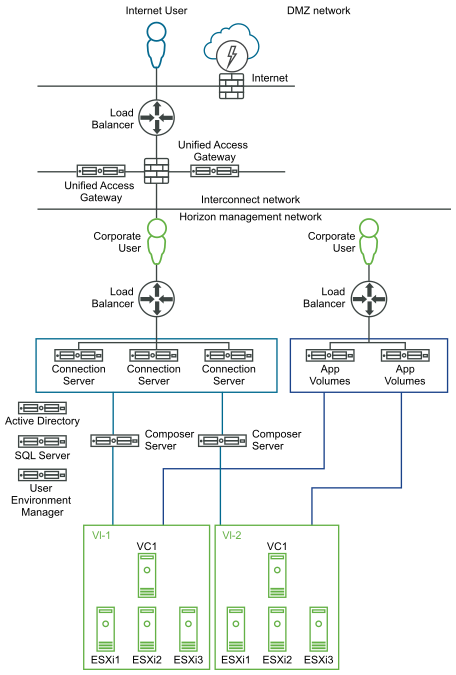A Horizon domain automates deployment of VMware Horizon components and supporting infrastructure to enable you to deliver Virtual Desktop Infrastructure (VDI) and Remote Desktop Session Host (RDSH) desktops and applications. These can be delivered as persistent, linked clone, or instant clone desktops. The Horizon domain can include VMware App Volumes for dynamic application mounting and User Environment Manager for a persistent end user experience.

- Composer Server
- App Volumes
- User Environment Manager
- Unified Access Gateway
- three Connection Servers
- two VI workload domains
- two App Volumes Managers
- one User Environment Manager
- two Composer Servers
- two Unified Access Gateway appliances
- three Load Balancers (one for incoming WAN traffic across Unified Access Gateway, one across Connection Servers, and one across App Volumes Manager)

The Horizon domain is based on the Horizon Reference Architecture, which uses Pod Block architecture to enable you to scale as your use cases grow. For more information about the architecture and number of supported virtual machines, refer to the Horizon 7 Pod and Block section in the VMware Workspace ONE and VMware Horizon 7 Enterprise Edition On-premises Reference Architecture document. A Horizon domain maps to a single pod. To support multiple pods, you can deploy multiple Horizon domains (where each domain maps to a single pod). If Cloud Pod Architecture is required to connect the pods for advanced multi-site or scale out workflows, this can be done manually. See Cloud Pod Architecture Overview in the Horizon 7 Architecture Planning document.
